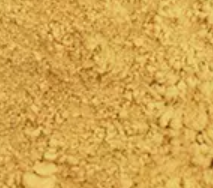Rhus verniciflua peel cera or Japanese wax, is produced synthetically with solvents from the peel of the Chinese lacquer tree (Toxicodendron vernicifluum) cultivated in China, Korea, Japan.
The name describes the structure of the wax:
- Rhus Verniciflua is the botanical name of the Chinese lacquer tree, a tree native to East Asia and known for its use in the craft and industrial creation of lacquerware.
- peel refers to the outer layer or skin of the tree.
- cera is the Latin word for wax.
The synthesis process takes place in different steps:
- Harvesting. The fruits of the Rhus Verniciflua tree are usually harvested by hand.
- Peeling. The skin of the fruit is removed. This peel contains the wax.
- Extraction. The wax is extracted from the peel. An extraction process is used in which the peel is immersed in a solvent that dissolves the wax. The solvent is then evaporated, leaving the wax behind.
- Purification. The extracted wax undergoes a purification process to remove residual impurities. This may involve a series of washing, filtration and centrifugation steps.
It appears as a dark brown powder.

What it is for and where
Rhus Verniciflua Peel Cera is a hard wax that is often used in cosmetics and personal care products due to its excellent emollient and film-forming properties. It helps moisturise the skin and forms a protective barrier that can help prevent moisture loss.
Cosmetics
Light stabilizer. It prevents light from degrading light-sensitive components and slows down degradation reactions that have already begun. The mechanism is, in a way, similar to antioxidants and the effectiveness depends on the.complexity of the formulation and the density of the product.
Skin conditioning agent - Emollient. Emollients have the characteristic of enhancing the skin barrier through a source of exogenous lipids that adhere to the skin, improving barrier properties by filling gaps in intercorneocyte clusters to improve hydration while protecting against inflammation. In practice, they have the ability to create a barrier that prevents transepidermal water loss. Emollients are described as degreasing or refreshing additives that improve the lipid content of the upper layers of the skin by preventing degreasing and drying of the skin. The problem with emollients is that many have a strong lipophilic character and are identified as occlusive ingredients; they are oily and fatty materials that remain on the skin surface and reduce transepidermal water loss. In cosmetics, emollients and moisturisers are often considered synonymous with humectants and occlusives.
![]() Rhus verniciflua peel cera
Rhus verniciflua peel cera 


